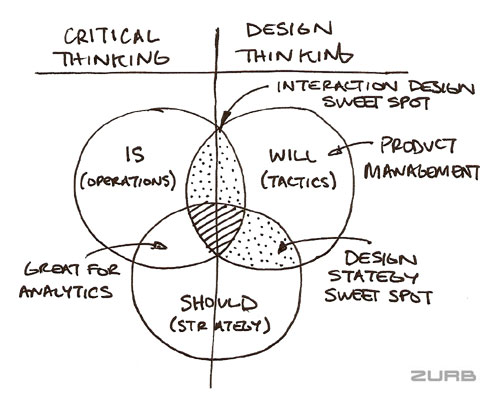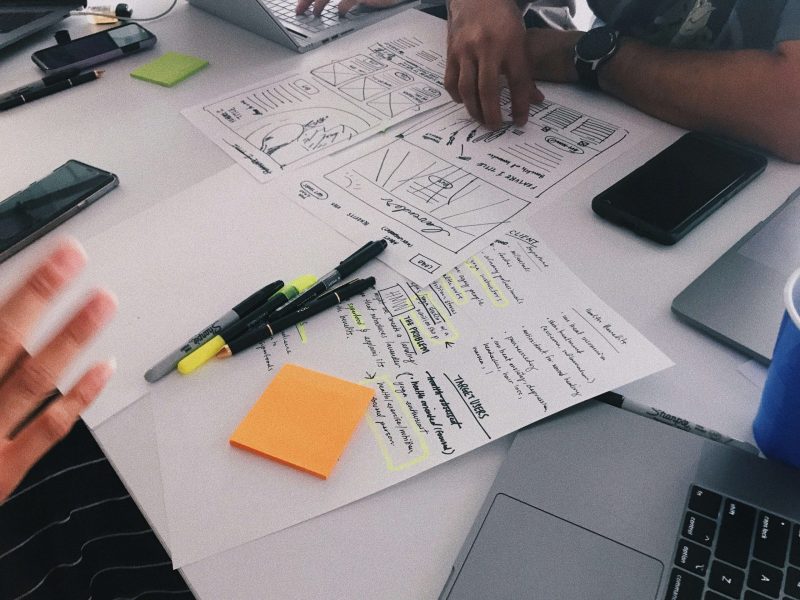A Roadmap for Modern Problem-Solving
In today’s fast-paced digital landscape, the fusion of critical thinking and design thinking has become a cornerstone for solving complex problems.
Whether you’re refining user experiences, optimizing operations, or crafting product strategies, these methodologies intersect at a “sweet spot” that drives innovation.
This post dives deep into their synergy, backed by case studies, frameworks, and actionable insights.
1. What is Critical Thinking?
Critical thinking is the disciplined process of analyzing, evaluating, and synthesizing information to make reasoned decisions. It’s foundational in fields like operations (the “IS”) and tactical planning (the “WILL”), where logic and evidence drive outcomes.
Key Components:
Clarity: Defining problems without ambiguity.
Logic: Connecting ideas coherently.
Bias Mitigation: Challenging assumptions.
Learn more from Stanford’s Encyclopedia of Philosophy: Critical Thinking.
2. What is Design Thinking?
Design thinking is a human-centered approach to innovation, popularized by firms like IDEO and ZURB. It emphasizes empathy, prototyping, and iteration to solve user-centric problems.
5 Stages of Design Thinking (IDEO Model):
Empathize: Understand user needs.
Define: Frame the problem.
Ideate: Brainstorm solutions.
Prototype: Build tangible models.
Test: Refine based on feedback.
Reference: IDEO Design Thinking.
3. The Sweet Spot: Where Critical and Design Thinking Converge
The overlap between these disciplines creates a strategic intersection essential for:
Interaction Design: Balancing usability (critical analysis) and creativity (design exploration).
Product Management: Aligning user needs (design) with business goals (critical strategy).
Operations & Tactics: Using logic to prioritize actions while staying user-focused.
Case Study: Airbnb’s Turnaround
In 2009, Airbnb leveraged design thinking to revamp its platform’s UX while applying critical analysis to pivot its business model. Result: A 30% increase in bookings.
Source: Airbnb Case Study.
4. Interaction Design as the Playground for Both Mindsets
Interaction design (IxD) thrives at the crossroads of these methodologies:
Critical Thinking: Assessing user flows for friction points.
Design Thinking: Prototyping intuitive interfaces.
Tools for IxD Excellence:
Figma: For collaborative prototyping.
Hotjar: To analyze user behavior critically.
Explore Interaction Design Foundation’s resources: IxD Basics.
5. Product Management: Bridging Vision and Execution
Product managers (PMs) use critical thinking to prioritize roadmaps and design thinking to advocate for user needs.
Framework: RICE Scoring
Reach, Impact, Confidence, Effort: A critical framework to evaluate features.
User Journey Mapping: A design thinking tool to visualize pain points.
Learn from ZURB’s Product Management Guide: ZURB PM Framework.
6. Operations (IS) and Tactics (WILL): The Backbone of Execution
Operations (“IS”): Streamlining processes through critical analysis (e.g., Lean Six Sigma).
Tactics (“WILL”): Agile sprints informed by design thinking workshops.
Example: Spotify’s Squad Model
Spotify combines operational rigor with design-centric “squads” to innovate rapidly.
Source: Spotify Engineering Culture.
7. Case Studies: Real-World Applications
IBM’s Enterprise Design Thinking: Scaling critical problem-solving across teams.
Gov.uk’s Service Design: Using critical analysis to simplify complex systems.
Read More: IBM Case Study.
8. Common Pitfalls and How to Avoid Them
Over-Reliance on Data: Balance analytics with empathetic design.
Solution Bias: Use critical thinking to question early assumptions.
9. Conclusion
Critical and design thinking are not opposing forces—they’re complementary. By mastering their intersection, teams can craft solutions that are both innovative and actionable.
Whether you’re a UX designer, product manager, or operations lead, this dual mindset is your key to staying ahead.
Further Reading:


